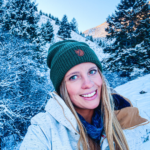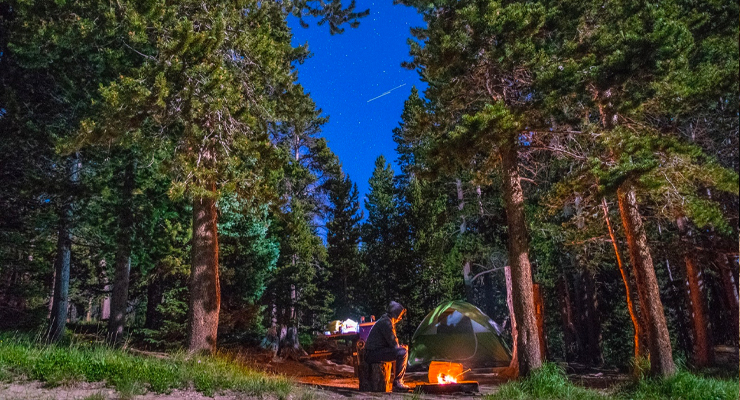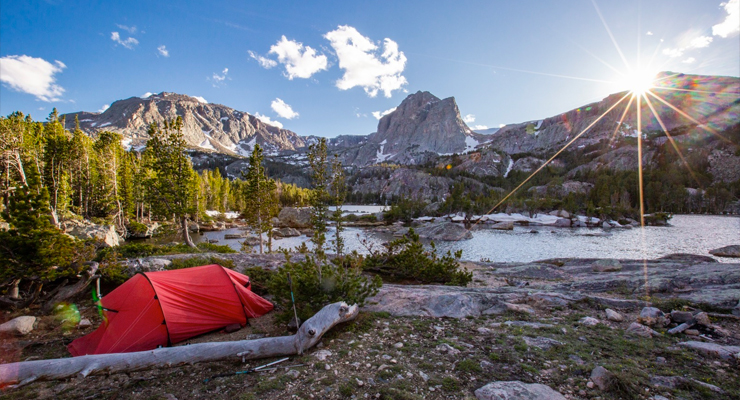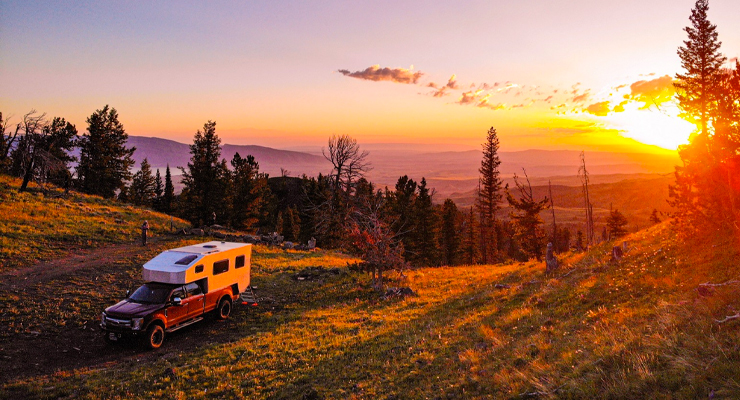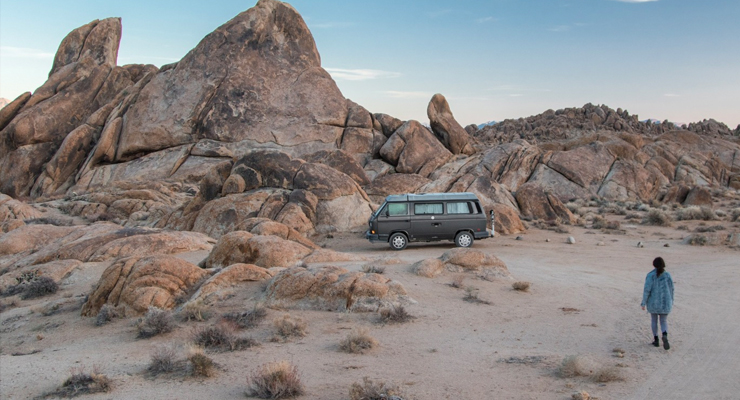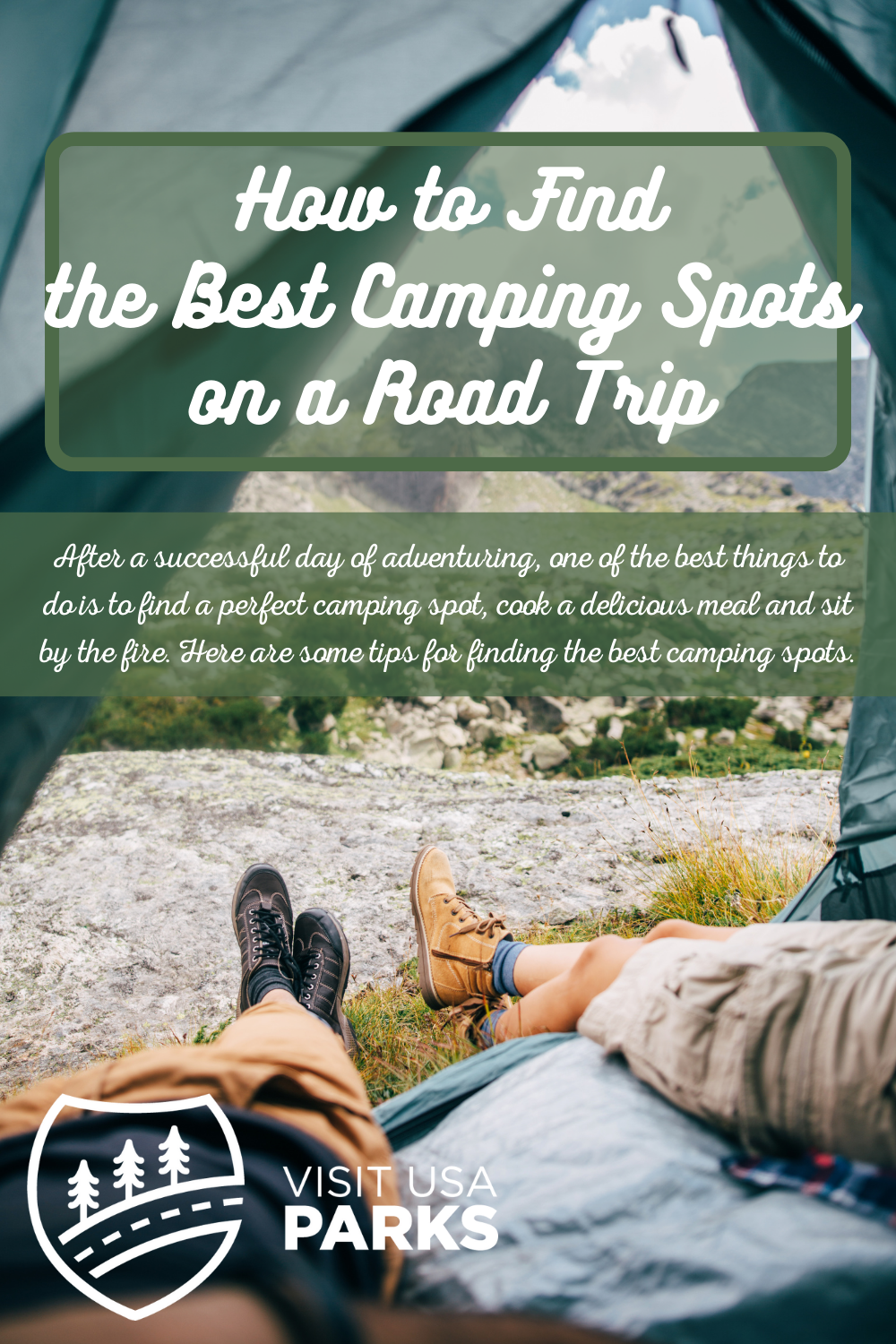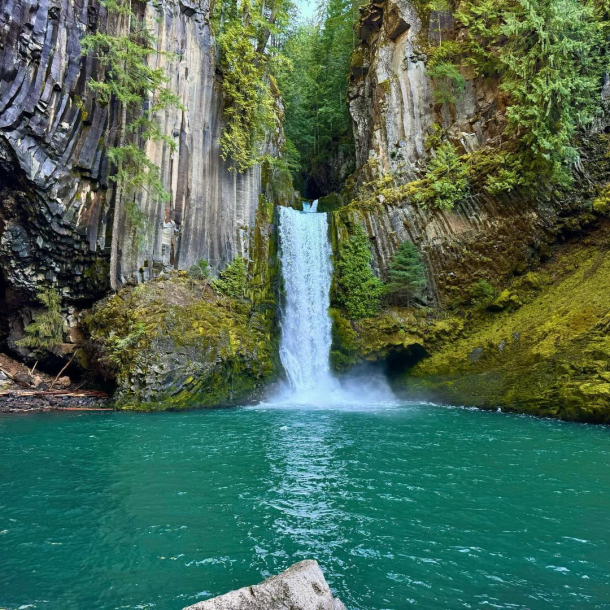Travel Tips
How To Find The Best Camping Spots On A Road Trip
PHOTO CREDIT: Keenan Barber
Camp On Public Lands
Forest Service & BLM Campgrounds
For those that prefer an established campground, US Forest Service and Bureau of Land Management (BLM) campgrounds are excellent options. These campgrounds are usually located in incredibly scenic areas, and are sometimes quite close to national parks. Of course, most national parks have campgrounds too, but many of them can be quite busy and may require reservations months in advance to get a spot. Some of my favorite campsites have been at Forest Service and BLM campgrounds. The sites at these campgrounds are often quite spacious, giving you some privacy. Plus, it’s usually very affordable to camp at BLM and Forest Service campgrounds—sometimes less than $10 per night! Now that’s money well spent. These campsites usually have basic amenities including vault toilets, fire rings, and potable water. Reservations are NOT accepted at some of these campgrounds, and campsites are available on a first come first served basis. This can be a good thing if you’re on a road trip and haven’t planned exactly where you’ll be each day and made reservations ahead of time.
Dispersed Camping
Once you try dispersed camping, you may never go back to a developed campground ever again. Sure, sometimes the amenities at those campgrounds are nice. But, does it compare to the incredible experience of having a campsite with spectacular views and no other people in sight? If you’re not familiar, ‘dispersed camping’ is camping on public lands outside of established campground areas. This type of camping is available on both US Forest Service and BLM land. It’s a fantastic option for those seeking secluded camping experiences. So, how do you find dispersed sites? For US Forest Service land, the motor vehicle use maps are one of the best ways to find out where the dispersed camping areas are. Apps can also be a helpful tool. You’ll find more details on those methods later in this article. On BLM land, you can camp in most areas that are not posted as ‘closed to camping.’ The dispersed sites may not be marked, but are located along most secondary roads. Whether on US Forest Service or BLM land, use pre-existing campsites when possible. Look for signs (flattened/disturbed area, fire pit, etc.) someone has camped in that spot before. As always, we encourage you to respect these amazing public lands. Don’t leave trash or disturb the wildlife, be responsible with campfires, and follow any rules and guidelines provided by the organizations that manage the land.
PHOTO CREDIT: Tobey Schmidt
Use Maps For Finding The Best Camping Spots
This might seem obvious, but sometimes maps are a very underutilized tool for finding the best camping spots. Here are a few tips for how to use maps when looking for places to camp.
Forest Service Motor Vehicle Use Maps
The US Forest Service provides motor vehicle use maps, and they are an incredibly useful resource in finding secluded areas in beautiful places that are suitable for camping. These maps show forest service roads where public motorized vehicle use is allowed. Dispersed camping areas, Forest Service campgrounds, picnic areas, and motorized trailheads are also indicated on these maps. You can find links to motor vehicle use maps for specific national forests (sorted by state) on this page of the US Forest Service website. For some helpful information about using these maps, check out their MVUM FAQ page.
Google Maps Satellite View And Google Earth
If you’ve never used Google Maps in satellite mode or Google Earth, you should. Especially when it comes to choosing the best camping spots. If you know the general vicinity of where you might want to camp, do a little exploring via these Google tools. You’ll get a pretty good idea of what the surroundings of a particular camping area might be—the topography, how many trees there are, and what other structures might be nearby. A couple other really cool features of Google Earth that might be beneficial as you search for places to camp:
- Enable photos—in the Google Earth settings, you can enable photos which displays photos of specific locations from other users. This can give you a better feel for the area and its surroundings.
- ‘Street View’ mode—even for some remote locations you can do ‘street view’ by dragging the person icon onto the map. This is an awesome way to digitally explore and immerse yourself. Check out this Google Earth screenshot from the Wind River Mountains in Wyoming to see this feature in action.
Use Google Maps satellite mode and/or Google Earth in conjunction with motor vehicle use maps and information you get from apps or other sources. If you find the GPS coordinates for a potential camping spot and do a search with these Google tools, you can see if it looks like the type of place you’d like to camp.
PHOTO CREDIT: Derek Johnson
PHOTO CREDIT: Jeremy Bishop
Use Apps To Find The Best Camping Spots
A quick search of the app store for ‘camping’ brings up several results. Many of these apps are designed to make it easier to find and/or reserve campsites. I have an entire folder full of camping apps on my phone and I’ve tried most of them. These are a few of my favorites:
Recreation.gov
This app is a database of campgrounds and other unique lodging options compiled from their partners including Bureau of Land Management, National Park Service, US Forest Service and others. If you want to find more information (availability, amenities, etc.) or reserve a campsite at a developed campground managed by the US Forest Service, BLM or National Park Service, this is the app for that.
Ultimate CG
This is the camping app I use most frequently. While this may not be the most visually appealing app you’ve ever used, it’s certainly very functional. With Ultimate CG, you can find campgrounds managed by a variety of organizations including US Forest Service, BLM, National Park, State, City and many more. One of the reasons I find this app so useful is the filtering capability. Some of the filtering options include:
- Amenities
- Activities
- Elevation
- Reservations
- Water availability
- Fees
- Open year round
- Type of campground (tent, RV, dispersed, formal, etc.)
Other helpful information provided for camping areas includes GPS coordinates, number of sites (for developed campgrounds), Forest Service road number (for dispersed camping), months the camping area is open, and road maintenance level.
AllStays Camp & RV
The AllStays Camp & RV app is geared toward people with trailer campers and RVs. In addition to camping areas, you can also find RV-related businesses and services, free parking areas (stores, rest areas, etc.), road grade information, and runaway ramps. Another potentially handy option with this app is to display low clearance areas. So, if you’re driving a really big rig, you can see certain places you may need to avoid.
Ask Locals About The Best Camping Spots
Even with all the apps and other internet tools we have these days, sometimes the best way to find out about cool places to camp is to ask a real person. Maybe check with someone working at the local outdoor sports store or coffee shop. Or, stop at a ranger station or visitor center and ask. However you find it, we hope you discover the perfect camping spot so amazing you want to keep it all to yourself. Want more camping hacks? Check out this article for some of our best eco camping tips!
